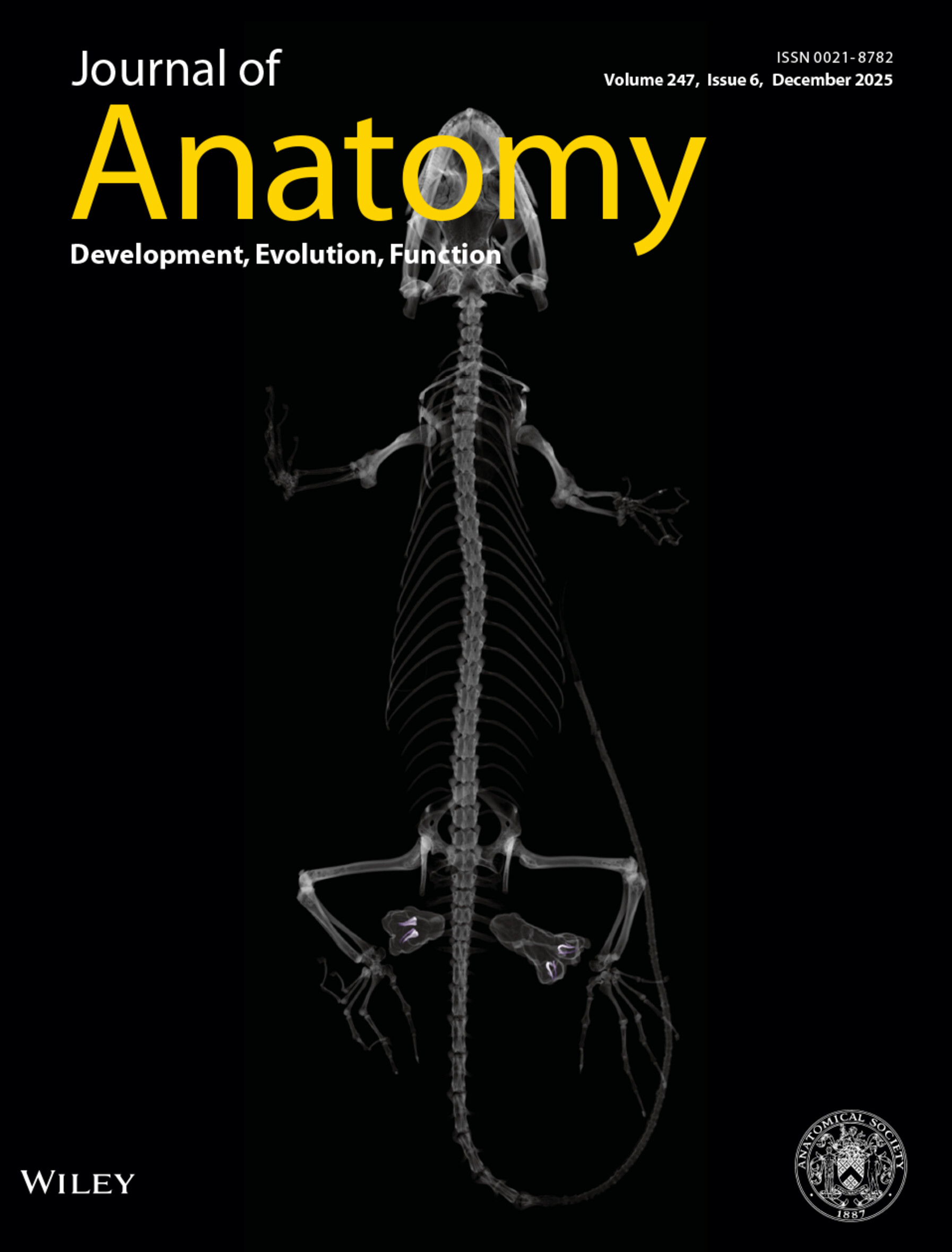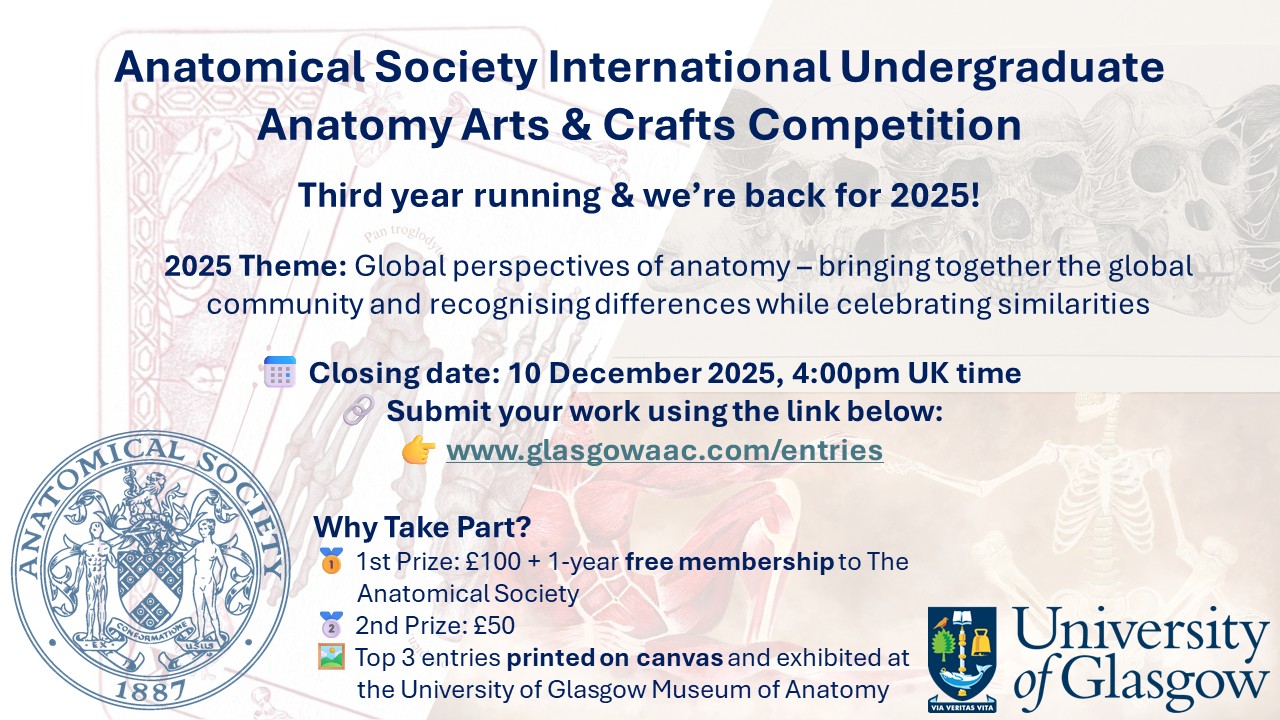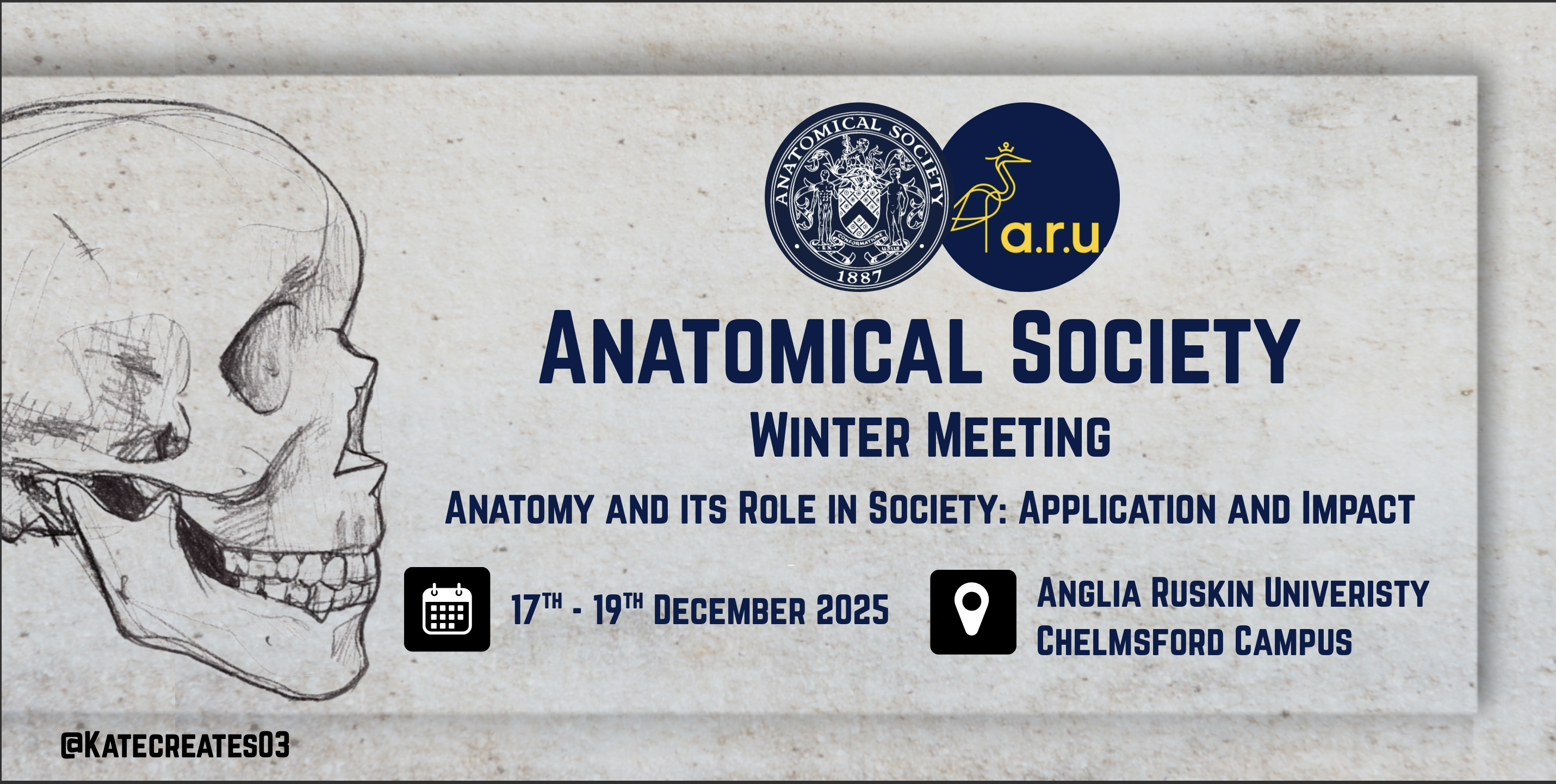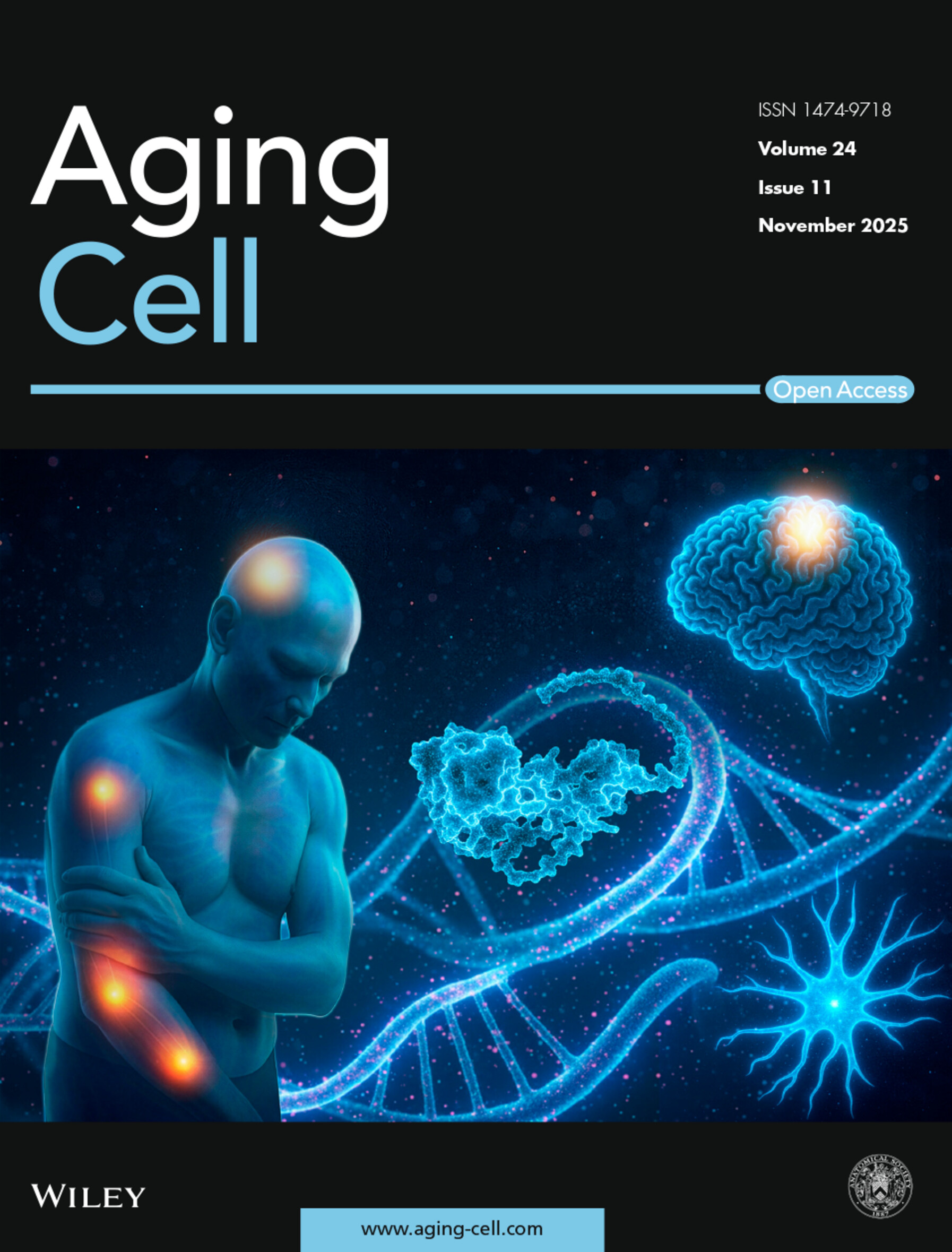
Editor Elena Patera
Welcome to the November issue of Anastomosis. In this issue, we bring you the latest news from our members and from the Journal of Anatomy and Aging Cell.
If you have any news, events or announcements that you would like to see published in the newsletter, please send us an email by the 20th of each month. Items should reach the editor a minimum of 30 days before the date that the event is scheduled to take place. Please remember that you can visit our News Page at any time for the very latest news.
Tip of the Month
Teaching Tip: Enhance Histology Learning with Virtual Microscopy using freely available software
Written by Dr Michelle Welsh and Laura Nightingale and Iona Kelly (student interns) from the University of Glasgow.
Histology remains one of the most conceptually challenging areas in anatomical education, often hindered by complex terminology, spatial reasoning demands, and limited hands-on time. Traditional microscope-based teaching, while valuable, presents logistical barriers—students cannot simultaneously view and discuss slides, they face challenges of using the microscopes which interrupts learning of the anatomical concepts, and learning often halts once they leave the lab. To address these challenges, anatomy lecturers at the University of Glasgow have been integrating virtual microscopy environments (VMEs) like OMERO into their teaching practice.
OMERO is a freely available, HTML-based software originally developed for research but now increasingly recognised for its pedagogical value. It enables students to interact with high-resolution whole slide images (WSIs) in a browser-based format, mimicking the experience of using a microscope. Students can zoom, pan, and explore tissue architecture independently or collaboratively, both in and beyond the lab. Students could access these resources in the lab alongside traditional microscope sessions as well as remotely in their own time. This flexibility supports self-directed learning and fosters peer discussion, especially when integrated into familiar platforms like Moodle.
Embedding OMERO slides into the local VLEs like Moodle was easy using tools like H5P which allows seamless access for students without requiring downloads or additional logins. This lowers technical barriers and encourages frequent engagement. Lecturers can further enhance the experience by pairing slides with interactive quizzes and gamified elements, reinforcing key concepts and promoting active recall. Student interns worked in partnership to co-develop OMERO-based histology materials, incorporating features they found most useful—such as revision tools and embedded assessments. This participatory approach not only improved resource relevance but also empowered students as co-creators of their learning environment.
Evaluation data showed strong student endorsement: 90% reported increased confidence, and over 80% felt their understanding of histology improved. While some found the interface initially challenging, feedback was overwhelmingly positive, with students valuing OMERO as both a revision aid and a preferred alternative to static images.
Would you like to tell the AS membership about your 'Tip of the Month', 'Anatomy Education Paper of the Month' or 'Anatomy Resource of the Month'?
We are looking for contributors who would be willing to write a short review on a 'Tip of the Month', 'Anatomy Education Paper of the Month' or 'Anatomy Resource of the Month. If you would like to contribute to an upcoming issue of Anastomosis, and join our bank of contributors please complete this form and we will be in touch!
Congratulations to the Latest Recipients of Anatomical Society Funding
If you would like to know more about how the Anatomical Society Funds our members, please see our full prize and funding matrix here. This month we would like to provide you with the reports of the successful endeavours of our recent awardees.
The Symington Bequest Fund Award
The Trustees of the Symington Bequest Fund make grants to Society Members towards costs associated with anatomical research. Below we provide the reports of our recent awardees!
Round 4
Ms Viktoria Levkanicova participated in the Anatomical Society Summer Meeting, St John's College, University of Oxford, 14th to 16th July 2025.
Round 6
Dr Joan Omosefe Osayande participated in the 35th Annual Symposium of the Network for European CNS Transplantation and Restoration (NECTAR), at the Colégio da Trindade, University of Coimbra, Coimbra, Portugal, 20-22 October 2025.
Public Engagement and Outreach Grants
The Anatomical Society's public engagement and outreach grants support the public engagement and outreach activities of members of the Society in the field of Anatomy. Below we provide the report of a recent awardee!
Round 6
Awardee: Dr Zubeyde Bayram-Weston
Institution: Swansea Science Festival 2025, Swansea
Event dates: 26th October 2025
Activity Title: 'Jelly Brain Surgery' - To showcase a 'DIY Brain Surgery' activity to enable members of the public to understand more about the anatomy of the human brain in the Swansea Science Festival 2025.
Deadlines for next round for Receipt of Applications
Award application deadline date for round 2 of the 2025/2026 award year:
- Symington Bequest
- Barclay Smith Travelling Fund
- Fellowship of the Anatomical Society
- Public Engagement and Outreach
- Departmental Seminar Awards
Deadline: 17.02.2026
Award application deadline date for round 2 of the 2025/2026 award year:
- Support for Student Societies
Deadline: 03.02.2025
N.B: For academic year 2025/2026 onwards, there will only be 5 prize rounds and council meetings.
Journal of Anatomy
For a summary of many of the published articles check out @JournalofAnat. As a member of the Anatomical Society you have access to these articles and to the Journal of Anatomy through Wiley Online Library.
Access the journal here.
The cover image for the latest issue is from a paper by Griffing et al. titled 'Diversity and development of the hemibacula of croaking geckos (Sphaerodactylidae: Aristelliger)‘.
The study aimed to describe and compare the morphology, histology, and development of the mineralized hemipenes (hemibacula) in croaking geckos (Aristelliger). The study confirmed that all species possess hemibacula with three distinct morphologies corresponding to major clades, found that these structures resemble chondroid bone and form after sexual maturity, and proposed that they develop through peramorphosis and may have functional significance related to reproduction.
Access the paper here
The cover image for the journal's November issue is shown below

Vacancies
Cadaveric Anatomy Specialist at Newcastle University
Deadline: 25/11/2025
Annual General Meeting of the Anatomical Society
The Annual General Meeting of the Anatomical Society will be held at 12.30 to 14.00 GMT on Thursday 18th December 2025 in room MAB221, Lord Ashcroft Building at Anglia Ruskin University, Bishop Hall Lane, Chelmsford, CM1 1SQ during the Society’s Winter Meeting.
Documentation for the AGM
Please find for download:
- The Agenda (click here)
- The draft Minutes of the last AGM 07.01.25 (click here)
- The Trustees’ Annual Report and Accounts 2024/25 (to follow)
- The revised Regulations and Schedules Document (to follow)
- A Proxy Voting Form (click here)
Upcoming Annual Council Elections and the Annual General Meeting of the Anatomical Society
The Anatomical Society would like to remind you of the upcoming annual elections to the Council of the Anatomical Society. We have now received nominations from our members and a ballot has been sent to all members.
The Ballot paper and instructions on how to complete it can be found here.
Please note the deadline for return of completed ballot forms is 17:00 GMT on Wednesday 10th December 2025.
Subsequently, the Annual General Meeting of the Anatomical Society will be held from 12.30 to 14.00 GMT on Thursday 18th December 2025 in room MAB221, Lord Ashcroft Building at the Anglia Ruskin University, Bishop Hall Lane, Chelmsford, CM1 1SQ, during the Anatomical Society Winter Meeting.
Anatomy Research Development Award 2025/2026
The Anatomical Society Council is pleased to announce the 2025/26, 'Anatomy Research Development Award' aimed at researchers in the early stages of their academic careers.
Applications are currently being invited from eligible researchers to commence in 2026.
The closing date for applications is midnight 31st December 2025.
Further details can be found here
Anatomical Society International Anatomy Arts & Crafts Undergraduate Student Competition (2025)
The AS International Anatomy Arts & Crafts competition is now live and it is open to undergraduate students from institutions worldwide.
This year's theme is "Global perspectives of anatomy – bringing together the global community and recognising differences while celebrating similarities". This theme was announced by the International Federation of Associations of Anatomists (IFAA) for World Anatomy Day 2025. The AS International Anatomy Arts & Crafts competition is proud to adopt this theme, as it aims to celebrate the intersection of art and anatomy, encouraging creativity, engagement and global dialogue.
For more information on the general and technical requirements of the competition, please check the information provided in the infographic below and on this link.

To submit your entry, use this link.
Competition closes on the 10th of December 2025 16:00 UK time.
Upcoming Conferences
Save the Date - Anatomical Society Winter Meeting
Anglia Ruskin University, Chelmsford
17th-19th December 2025

We are looking forward to welcoming you to the AS winter meeting in Chelmsford.
This meeting will focus on the role anatomy and anatomical knowledge has within our society, with a focus on its wider application and impact. Subthemes within the meeting will include:
- Anatomical education and the impact this has on learners of anatomy
- Anatomical outreach and public engagement and the impact this has on the public
- Anatomical research and the impact of this, under further subthemes of human interfaces and ergonomics, development, technology, EDI and clinical/ surgical applications
- The current landscape of ethics in anatomy
Registration is now open!
22nd Congress of the International Federation of Associations of Anatomists (IFAA), 13th-16th August 2026, Melbourne, Australia
Call for Abstracts NOW open!

The call for abstracts is now open!
This is an opportunity to share our work, insights, and innovations with a global audience of colleagues and thought leaders in anatomy and related fields, including:
- Anatomical Sciences Education
- Surgical and Clinical Anatomy
- Imaging Anatomy
- Neuroscience and Cell Biology
- Ethics and Law
- Anatomy for Everyone, including Biological Anthropology, Forensics, Histology, Developmental Anatomy/Embryology
Submission Deadline: 14 February 2026
Submit your abstract and learn more: https://ifaa2026.org/en-AU/pages/program/call-for-abstracts
Aging Cell
Aging Cell is a bi-monthly peer-reviewed, open access journal that aims to publish the highest quality, innovative research addressing fundamental issues in the biology of aging. We would like to remind you that our colleagues Aging Cell are now back on Twitter and sharing exciting news and updates on articles from their journal. Please give them a follow @aging_cell
Access the journal here: Aging Cell
The cover image for the latest issue is from a paper by Rai-Hua Lai et al. titled 'Sex- and APOE Genotype–Dependent Pain Susceptibility and Alzheimer's Risk Mediated by the Lipid Metabolism Enzyme LPCAT2'.
The study aimed to determine whether a shared molecular factor links pain susceptibility with Alzheimer’s disease progression, and found that the lipid-metabolizing enzyme LPCAT2, in a sex- and APOE genotype–dependent manner, causally contributes to both heightened pain sensitivity and accelerated transition from MCI to AD, particularly in non-APOE4 males.
Access the paper here
The cover image for the journal's November issue is shown below
